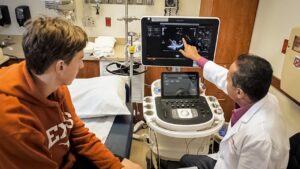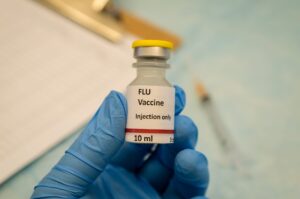What Are the Early Signs of Prostate Problems? Key Symptoms Men Should Know

Prostate health concerns affect millions of men worldwide, particularly as they age. Understanding the early warning signs of prostate problems is crucial for timely intervention and effective treatment. Common early indicators include frequent urination (especially at night), weak urine flow, difficulty starting urination, and the feeling of incomplete bladder emptying.
These symptoms often signal benign prostatic hyperplasia (BPH), but can sometimes indicate more serious conditions like prostate cancer. Other warning signs to monitor include blood in urine or semen, painful ejaculation, and persistent discomfort in the lower back, hips, or upper thighs.
Regular prostate screenings become increasingly important after age 50, or earlier for those with family history of prostate cancer. Maintaining awareness of these symptoms and seeking medical evaluation when they appear allows for earlier diagnosis and better treatment outcomes.
Recognizing Early Signs of Prostate Problems
Prostate problems typically manifest through distinct patterns of symptoms that affect urination, cause discomfort, and sometimes impact sexual function. Early detection is crucial for effective treatment and maintaining quality of life.
Urinary Changes
Urinary symptoms are often the first noticeable signs of prostate issues. Men may experience increased urinary frequency, especially at night (nocturia), which can significantly disrupt sleep patterns.
Difficulty starting urination, a weak or interrupted urine stream, and the feeling of incomplete emptying after urination are common indicators of an enlarged prostate or benign prostatic hyperplasia (BPH).
Some men notice dribbling at the end of urination or an urgent need to urinate that comes on suddenly. These symptoms develop gradually as the prostate enlarges and puts pressure on the urethra.
Unexpected urinary incontinence or blood in the urine (hematuria) requires immediate medical attention, as these may indicate more serious conditions.
Discomfort and Pain
Pain or discomfort related to prostate problems can manifest in several areas of the body. Some men experience a dull, persistent pain in the lower back, pelvis, or upper thighs.
Pressure or pain in the rectum may occur, particularly when sitting for extended periods. This discomfort can range from mild to severe and may worsen over time if left untreated.
Some men report pain or burning during urination, which could indicate prostatitis (inflammation of the prostate). Ejaculatory pain is another symptom that shouldn’t be ignored.
Persistent discomfort in the bladder area, especially after urination, might suggest prostate involvement rather than a simple urinary tract infection.
Sexual Health Symptoms
Prostate problems can significantly impact sexual function. Erectile dysfunction (ED) sometimes serves as an early warning sign of prostate issues, including prostate cancer in some cases.
Decreased ejaculatory volume or painful ejaculation may indicate prostate inflammation or obstruction. Some men notice blood in their semen (hematospermia), which, while often benign, warrants medical evaluation.
Reduced libido or sexual desire can occur with prostate problems, particularly when accompanied by other urinary or pain symptoms. This combination of symptoms often prompts men to seek medical attention.
Early prostate cancer rarely causes noticeable sexual symptoms, which highlights the importance of regular screening after age 50, or earlier for men with family history or other risk factors.
Understanding Common Prostate Conditions
Prostate disorders affect millions of men worldwide, particularly as they age. These conditions range from benign enlargement to inflammatory issues and cancerous growths, each with distinct symptoms and treatment approaches.
Benign Prostatic Hyperplasia (BPH)
BPH refers to the non-cancerous enlargement of the prostate gland that commonly occurs as men age. By age 60, over 50% of men experience some degree of BPH.
The enlarged prostate can press against the urethra and bladder, causing various urinary symptoms:
- Frequent urination, especially at night
- Weak urine stream or difficulty starting urination
- Inability to completely empty the bladder
- Urinary urgency or sudden need to urinate
Treatment options depend on symptom severity and include lifestyle modifications, medications that shrink the prostate or relax muscles, and surgical interventions for severe cases.
Prostatitis
Prostatitis involves inflammation of the prostate gland, affecting men of all ages. Unlike BPH, it can develop rapidly and causes different symptoms.
Types of prostatitis include:
- Acute bacterial prostatitis: Sudden infection with fever and pain
- Chronic bacterial prostatitis: Recurring infection
- Chronic pelvic pain syndrome: Most common form without identifiable infection
- Asymptomatic inflammatory prostatitis: Detected incidentally during other tests
Symptoms typically include pain in the lower back, groin, or pelvic area. Men may experience painful urination, ejaculation, or bowel movements.
Treatment varies by type but may include antibiotics, anti-inflammatory medications, alpha-blockers, and lifestyle changes.
Prostate Cancer Overview
Prostate cancer is the second most common cancer in men globally. Early detection significantly improves treatment outcomes.
Risk factors include:
- Age (more common after 50)
- Family history
- African ancestry
- Certain genetic mutations
Early prostate cancer often produces no symptoms. As it progresses, men may experience symptoms similar to BPH, including difficulty urinating, blood in urine or semen, erectile dysfunction, and bone pain in advanced cases.
Screening typically involves PSA (prostate-specific antigen) blood tests and digital rectal examinations. Treatment options range from active surveillance for slow-growing cancers to surgery, radiation, hormone therapy, and chemotherapy for more aggressive forms.
Identifying Early Warning Signs of Prostate Cancer
Recognizing the early warning signs of prostate cancer can significantly improve treatment outcomes. While early-stage prostate cancer often produces no symptoms, certain indicators may appear as the disease progresses.
Specific Prostate Cancer Symptoms
Urinary changes are frequently the first noticeable signs of prostate cancer. Men may experience difficulty starting urination, a weak or interrupted urine flow, or increased frequency of urination, especially at night.
Blood in urine or semen can be alarming symptoms that warrant immediate medical attention. This isn’t always cancer-related but should never be ignored.
Some men report pain or burning during urination or ejaculation. As prostate cancer advances, persistent pain or stiffness in the lower back, hips, or upper thighs might develop when cancer spreads to nearby bones.
Erectile dysfunction sometimes occurs, particularly if the cancer affects nerves controlling erections. Unexplained weight loss or fatigue may indicate advanced prostate cancer, though these symptoms are non-specific.
Differences From Other Prostate Issues
Prostate cancer symptoms often mimic those of benign prostatic hyperplasia (BPH), a non-cancerous enlargement of the prostate. Both conditions can cause similar urinary symptoms.
The key difference is that BPH typically doesn’t cause blood in urine or semen. Pain symptoms are also more commonly associated with prostate cancer or prostatitis rather than BPH.
Prostatitis (inflammation of the prostate) often presents with fever, chills, and pelvic pain—symptoms rarely seen in early prostate cancer. This condition typically develops more suddenly than cancer.
Age can be a distinguishing factor. BPH commonly affects men over 50, while prostate cancer risk increases significantly after age 65. Family history significantly impacts prostate cancer risk but has less influence on other prostate conditions.
When to Seek Medical Advice
Men should consult a doctor immediately if they notice blood in urine or semen, or experience persistent urinary problems. These symptoms don’t automatically indicate cancer but require proper evaluation.
Regular screenings become crucial after age 50, or earlier (age 45) for Black men and those with family history of prostate cancer. The American Cancer Society recommends discussing screening options with your doctor to make an informed decision.
Screenings typically involve a PSA (prostate-specific antigen) blood test and digital rectal examination. Elevated PSA levels may indicate prostate cancer but can also result from other conditions.
Don’t delay seeking medical attention due to embarrassment. Early detection dramatically improves treatment outcomes and survival rates. Most prostate cancers grow slowly, giving ample opportunity for successful intervention when caught early.
Diagnosis and Next Steps
Recognizing potential prostate problems early leads to more effective treatment options. Proper diagnostic procedures help determine whether symptoms indicate benign conditions or more serious issues requiring immediate attention.
Diagnostic Testing for Prostate Problems
When prostate issues are suspected, healthcare providers typically begin with a detailed medical history and physical examination. The digital rectal exam (DRE) allows doctors to feel the prostate gland for abnormalities in size, shape, and texture.
Blood tests play a crucial role in diagnosis. The prostate-specific antigen (PSA) test measures levels of a protein produced by the prostate. Elevated PSA levels may indicate inflammation, enlargement, or cancer.
Urinalysis checks for signs of infection or other urinary tract issues. In some cases, imaging studies like ultrasound or MRI provide detailed views of the prostate.
For definitive diagnosis, a prostate biopsy may be necessary. This procedure involves collecting small tissue samples for laboratory examination to detect cancer cells.
Prostate Cancer Screening
Regular screening is vital for early detection of prostate cancer. The American Cancer Society recommends that men discuss screening options with their doctor starting at age 50 for those at average risk.
Men with higher risk factors should begin these discussions earlier—around age 45. African American men and those with family history of prostate cancer should consider starting at age 40.
Screening typically involves both PSA testing and DRE. These complementary tests help identify potential issues that warrant further investigation.
The National Cancer Institute emphasizes that early detection through screening significantly improves treatment outcomes. Men should understand both the benefits and limitations of screening before making decisions.
Recent advances in screening methods include genetic tests and biomarkers that may provide more accurate information about cancer risk.
Understanding Risk Factors
Age represents the primary risk factor for prostate problems. Most prostate cancers are diagnosed in men over 65, while BPH becomes increasingly common after 50.
Key risk factors include:
- Family history (especially father or brother with prostate cancer)
- African American ethnicity (higher rates and more aggressive forms)
- Genetic mutations (BRCA1/BRCA2 genes)
- Diet high in red meat and high-fat dairy products
Lifestyle factors can influence prostate health. Obesity correlates with increased risk of aggressive prostate cancer. Regular exercise appears to have protective effects.
Environmental exposures to certain chemicals may increase risk. Research continues to investigate connections between occupational hazards and prostate problems.
Understanding personal risk factors helps men make informed decisions about screening frequency and preventive measures.
Where to get Urology Test In New York?
Urological tests can be conducted at various healthcare facilities. Primary care physicians may perform basic screenings, but specialized testing typically requires a urologist’s expertise. Many hospitals offer comprehensive urological services with advanced diagnostic equipment. These facilities often provide both outpatient testing and follow-up care in one location. Specialized urology clinics focus exclusively on urological health and typically offer more flexible scheduling. These clinics may provide a more intimate setting compared to large hospital environments. Big Apple Medical Care in New York provides comprehensive urological testing services. Their facility features modern diagnostic equipment and experienced specialists who can perform various urological examinations.
Common locations for urological testing include:
- Hospital urology departments
- Specialized urology clinics
- Multi-specialty medical centers
- Outpatient diagnostic centers
- Primary care offices (for initial screenings)
Insurance coverage for urological tests varies by provider and plan type. Patients should verify coverage before scheduling appointments to avoid unexpected expenses. Most facilities require a referral from a primary care physician before scheduling specialized urological tests. This referral process ensures appropriate medical necessity for the testing. Walk-in testing is rarely available for specialized urological examinations. Patients should expect to schedule appointments in advance, with waiting periods varying by location and test type.
Frequently Asked Questions
Prostate health concerns affect many men, particularly as they age. These common questions address crucial aspects of detection, symptoms, prevention, and treatment options.
What are the initial indicators of prostate cancer?
Early prostate cancer often presents no symptoms. When symptoms appear, they may include urinary issues like frequent urination, weak stream, or urinary urgency.
How can one recognize stage 1 prostate cancer symptoms?
Stage 1 prostate cancer is typically asymptomatic and discovered through routine PSA screening or digital rectal exams rather than through noticeable symptoms.
What symptoms suggest an advanced stage of prostate cancer?
Advanced prostate cancer may cause bone pain, unexplained weight loss, fatigue, and difficulty urinating. Blood in urine or semen and erectile dysfunction might also occur.
How might one prevent prostate cancer?
Prevention strategies include maintaining a healthy diet rich in fruits and vegetables, regular exercise, and avoiding smoking. Regular screenings at Big Apple Medical Care can aid in early detection.
Could you identify common risk factors for developing prostate problems?
Age over 50, family history of prostate issues, African-American ethnicity, and obesity are significant risk factors for prostate problems. Certain genetic mutations may also increase risk.
What are the standard treatments for prostate cancer?
Treatment options include active surveillance, surgery, radiation therapy, hormone therapy, chemotherapy, and immunotherapy. The appropriate approach depends on cancer stage, patient health, and personal preferences.






